Facts

Pug Facts
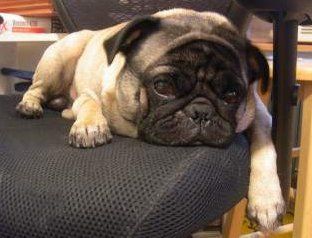
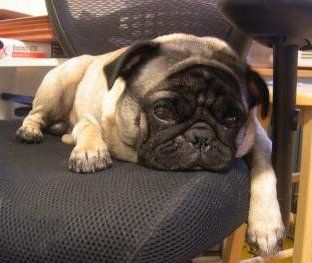
Overview
Every breed is unique, but the Pug really stands apart. With his barrel shaped body, flat wrinkled face and expressive eyes, the appearance of this dog causes second and third glances.
When we add in the element of his personality, a very charming, intelligent and amusing dog, the Pug becomes one of the most beloved of all dog breeds.
When a dog is so popular, myths begin to circulate...Where did this dog come from? Why was be bred to look as he does? Does a Pug really have a sense of humor?
This page is dedicated understanding the truth about this breed and bringing you the most interesting facts.
1 - Snoring
This is a Pug fact for the breed in general, so while there will be some Pugs that are perfectly quite while sleeping, most will have some degree of snoring. The reason for snoring has to do with the facial structure of this breed. Great time was taken, over the course of centuries, to develop this dog to have a very flat face and a small flat nose. There are other dogs with this type of facial structure as well, called brachycephalic and this includes: the Bulldog, Japanese Chin, Neapolitan Mastiff, Lhasa Apso, Shih Tzu, Pekingese, Brussels Griffon, Bullmastiff and English Toy Spaniel.
Out of all of these breeds, the Pug has one of the shortest snouts. This creates a very compacted space for breathing passages. In addition, the soft palate (flap of skin above the windpipe) is commonly too long in relation to the windpipe opening and a Pug may have narrowed nostrils (stenotic nares) which can cause snoring as well.
Breathing become even more restricted when the Pug lies down. Some will have a light snore that is barely audible while other Pugs can be quite loud. If this is accompanied with heavy panting and any breathing difficulties while exercising the Pug should be examined by a veterinarian. A small medical procedure can widen the nasal opening and/or shorten the palate to allow for easier breathing.
2- Intolerance for Heat and Outdoor Elements
Some believe that the Pug must remain indoors, but this is an over-exaggeration. It is true high temperatures and humidity can cause breathing problems. In addition, exercise should be moderate since a Pug can overheat.
While Pugs certainly can and should have daily periods of exercise outdoors and of course be led outside to eliminate, the Pug dog is an inside dog.
This breed can not handle strong cold or heat . An air temperature between 68 degrees Fahrenheit (20 Celsius) and 74 degrees Fahrenheit (23 Celsius) is the ideal environment for the Pug.
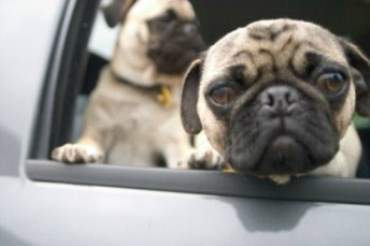
On hot days, heading out early in the morning or later in the evening when the sun is ready to set can allow for an easier walk. Walking in the shade and taking breaks in a shaded area, offering a drink of cool water can also help the Pug do well on his daily walk.
3- Energy Levels
Some say that the Pug is lazy and this is not really true. All dogs love to take naps. The Pug is such a fantastic pet because whether its owners are energize people or couch potatoes, they will fit in perfectly with the family.
This breed most definitely loves to cuddle up on the couch to nap; however in the same day this dog may be found exploring around to satisfy its strong curiosity. Just like humans, the Pug may feel like lazing around or taking a short stroll.
Because they tend to overheat quickly, they are not usually able to take long hikes without planned stops for shade, water, rest and treats. With good weather conditions, a Pug can do a brisk 20 to 30 minute walk once or twice per day.
4- Curled Tails
Most, but not all Pugs have curled tails. This feature is part of the AKC breed standard and most Pugs have a single curl. Some have a double curl, which is the most desirable. Other Pugs (not most) will not have a curl...this does not affect their place as a fantastic canine family member, but is seen as a major fault in show.
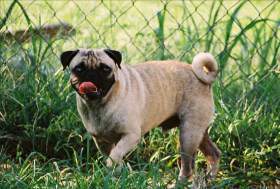
5- Shedding
The Pug is a heavy shedding
dog, despite his short coat. The hairs on the thick double coat have a shorter life cycle than average. Therefore, hairs will shed off at a fast pace. For most, this breed will shed not more than a vacuum and lint brush can't handle. Regular grooming, including a good brushing of the coat, can help keep things under control.
6- Noises
As with snoring, due to the facial structure of this breed, the Pug is prone to making snorting and grunting noises. One particular noise occurs because this dog's flat and short nose... When a Pug sneezes, he usually must inhale the forced air as opposed to letting it out. This type of sneezing is triggered by drinking water quickly, pressure being put on its collar bone or getting excited.
7- Expressive and Affectionate Qualities
Wonderful personality traits have been inbred into the Pug dog. Most will do just about anything to get attention and hugs from its owner. They seem to have an almost uncontrollable need for love; they will make funny faces, dance around and act very silly to gain the attention from the people they consider family. With this dog, you have a best friend, companion and soul mate for life.
This breed is not known for guard dog capabilities, although long ago and for a brief period of time, the Pug was used as a watchdog. In general, he is laid back and while aware of strangers, a Pug may not alert his owners by barking. This is not an aggressive dog and Pugs rarely have biting issues other than those associated with teething and playing.
8- Medical Problems
Every breed that exists has its own set of potential health problems
and issues. The Pug, if cared for properly, will not have any more medical issues than another breed. This particular breed in prone to eye problems and breathing problems that will need to be addressed by an experience veterinarian. Other issues can be hip and knee problems, (most often luxating patella and hip dysplasia). The wrinkles
on the face and body can become infected (often with a yeast infection) if not properly cleaned to remove debris and moisture.
9-Size
The Pug is the largest of all of the toy breed dogs with a weight range of 13 to 18 pounds (5.89 to 8.16 kg) and a height (from floor to withers [shoulder] ranging from 10 to 14 inches (25 to 36 cm). While this is the standard, many pet Pugs are a bit larger. Adults can be up to 20 or 21 lbs. (9.07 to 9.52 kg) without being overweight.
Despite some marketing attempts to state otherwise, there is no such breed as the Miniature or Tea Cup Pug. When a breeder crosses a Chihuahua (the smallest toy dog in the world) with the Pug (the largest toy dog in the world), it will produce a dog that somewhat resembles a Pug but is much smaller.

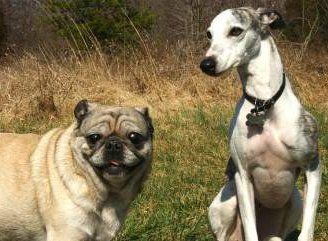
This type of breeding is risky since the puppies may carry the potential medical issues of both parents. Most importantly, it is a shame when an owner is duped into believing that they have purchased a purebred when they in fact have a "designer dog" that is being called a Mini Pug.
Another smaller version of the purebred Pug is a mixed dog called the Puggle (not recognized by the AKC), however he does not really resemble a Pug enough to be mistaken for a smaller version of this breed. Mixing a Beagle and a Pug will produce a Puggle, which is growing in popularity as a designer (or hybrid) dog.
10 - Names/ Terminology - Other names for the Pug include: Chinese Pug, Dutch Bulldog, Dutch Mastiff, Mini Mastiff, Mops and Carlin. Also, while note all breeds have a name for when there is a group of them, the Pug does. A group of Pugs is called a grumble.
PetPugDog.com Copyright 2019. All rights reserved. Privacy Policy
We are a participant in the Amazon Services LLC Associates Program, an affiliate advertising program designed to provide a means for us to earn fees by linking to Amazon.com and affiliated sites.
